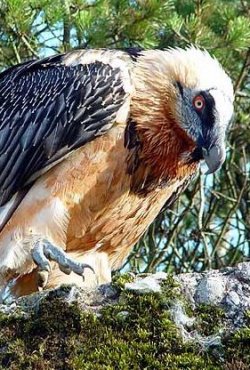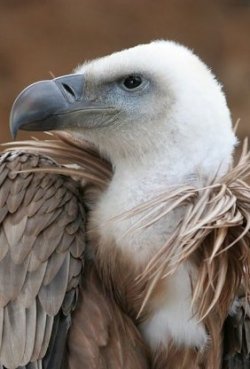|
Laboratory
- Eagles, or vultures?
I
had been aware since long that the Ladinian, or pseudo-ladinian,
word "varjul", translated by Wolff
as "eagle", as a matter of fact indicated a vulture,
in detail the bearded vulture. Ulrike
Kindl, both in her writings and talking about it, had confirmed
to share my interpretation. I have been quite surprised, thence,
while reading Veronica Irsara's
graduation dissertation, as she confuted this point. Later on,
Iaco Frontull also, at San Vigilio, asked me why was I translating
as "vulture" what everybody, in Badia and Marebbe, understood
as an "eagle". Then I felt the need to go into some
more depth.
The
small Badia-Ladinian-to-Italian dictionary that I own (G.S.Martini,
published at Florence but compiled by three schoolmasters from
Badia and Marebbe) is dated 1950; it translates the Ladinian term
aquila as "eagle" and variö
(indicated as a purely Marebbe term) as "vulture".
I
searched the Ladinian Linguistic Atlas of the Salzburg University
(ALD-I).
Unfortunately the term "vulture" is not listed. At the
item "eagle" one can find that:
- almost all Ladinian idioms use for "eagle"
a term that can rather easily connected with Latin "aquila"
(I deem a possible loan from Italian "aquila" to be
out of question);
- exceptions are the dialect of Bula (middle
Gardena valley), where a word of clear German derivation is used,
and a wide area of the Badia and Marebbe valleys, where the terms
"variö" or "variöl"
or "variöl da sas" are standard.
We must remark that this area crosses the usual dialect boundaries,
as it stretches from the Badia Ladinian (San Cassiano, San Leonardo)
to the Ladinian proper (S.Martin de Tor) and Mareo Ladinian (la
Pli), but it does not include the Badia towns of Corvara, Colfosco
and La Valle, where the word aquila is still in use!
The so-called "Transcriptionary"
at the same site (terms added by users of the site, as far as
I can understand) displays something different yet, because together
with aquila it lists words derived from variöl
for the remaining areas of the Badia valley as well, and at the
same time it proposes all over the Gardena valley the secondary
term valtoi aside a primary word connected with "aquila"
(éguia, égula).
When I spent a few days at the Fanes
Hut this summer, I had the chance to ask Max Mutschlechner.
He answered me that in Marebbe the eagle is usually called variö
(da sas as it nests on the cliffs), and that for the vulture
the term that is (occasionally) used is valtö.
A
the same time, I came to know also that in the Dolomites two
different types of vultures once existed, the above quoted bearded
vulture (also named eagle-vulture because, among all vultures,
it is the closest to an eagle in its likeness and habits) and
the griffon (Gyps fulvus), the most widely known type
of vulture (it seems that, recently, this species also has been
re-introduced - quite silently - into the Dolomites).
 |
 |
 |
Eagle
|
Bearded
Vulture |
Griffon |
So
we are dealing with three different big birds of prey
(eagle, bearded vulture, griffon vulture) and three different
Ladinian names (aquila, variö, valtö).
Is it possible that originally there was a one-to-one correspondence
of names wth birds, and that only recently, also as a consequence
of the extinction of two of them, Ladinians started confusing
them? I would like being able to demonstrate that the valtö
(strictly connected with Latin vultur, as well as
French vautour and Italian avvoltoio are)
once was the griffon and only the griffon, and the variö
was the bearded vulture and only the bearded vulture; but by now
we only have evidence that the word aquila is losing
ground over time, in the usage of the various Ladinian idioms
- and in a quite unorderly way - in the course of just a few decades.
|

